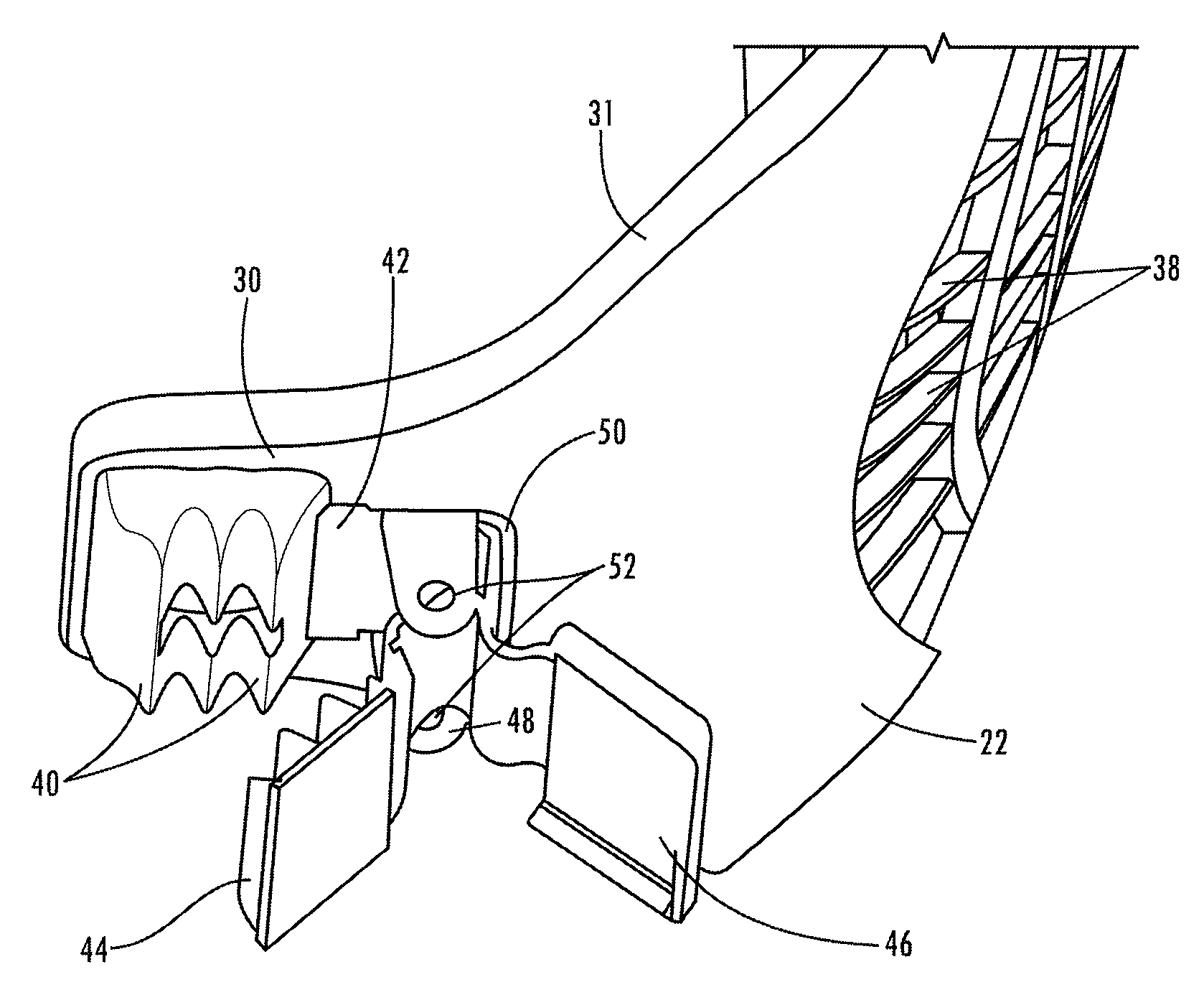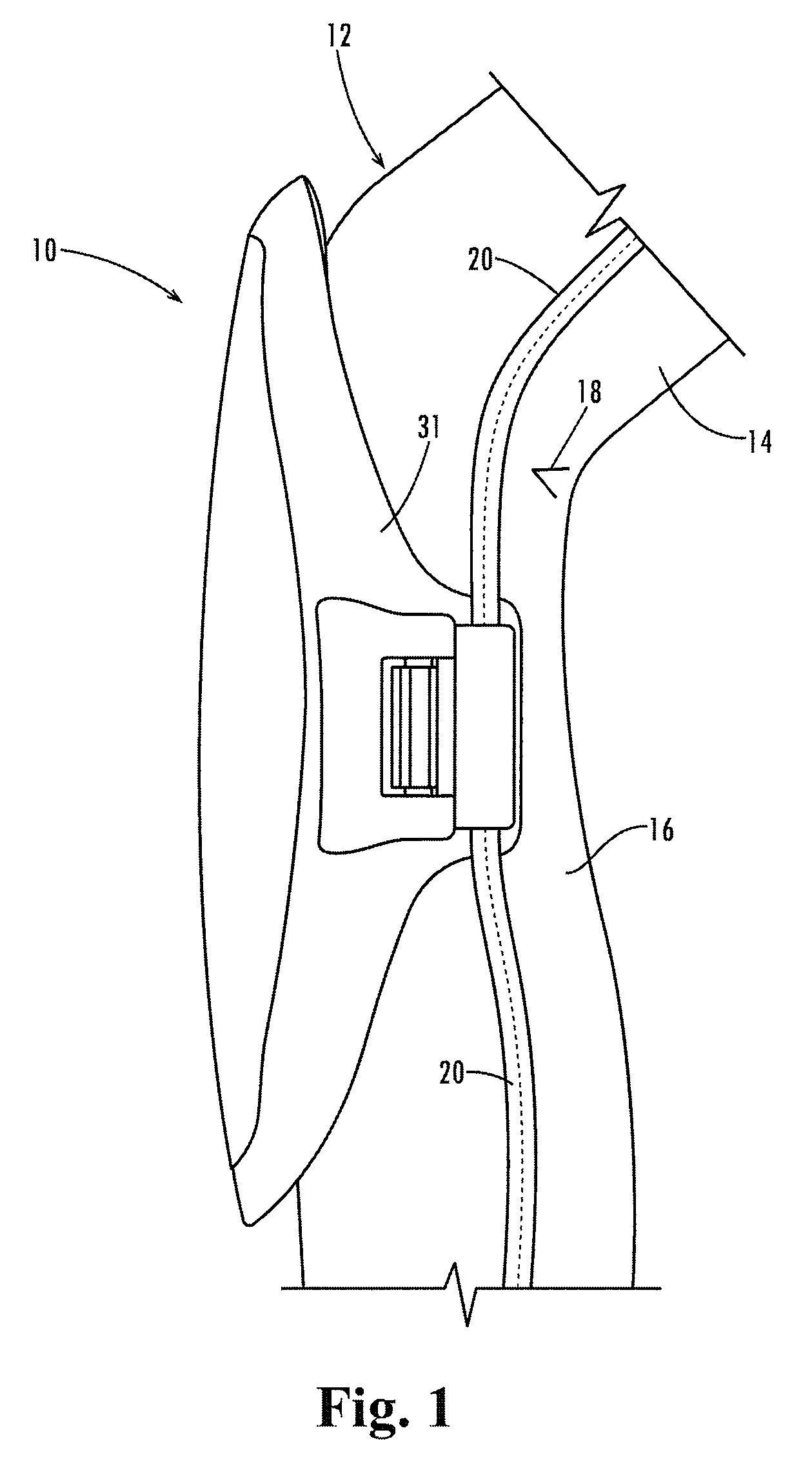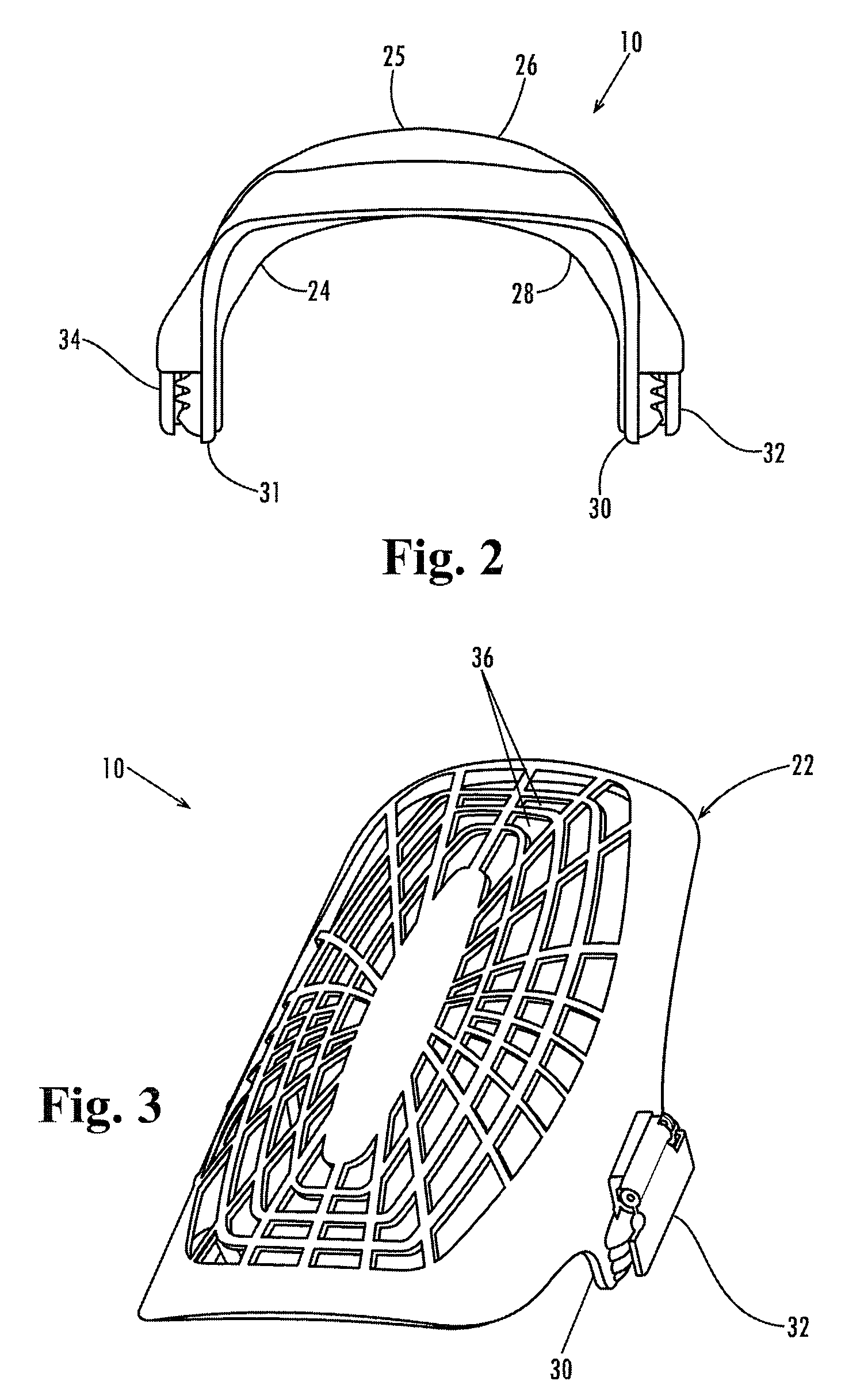Clip-on protective kneepad
a protective knee and clip-on technology, applied in the field of protective knee pads, can solve the problems of affecting the comfort of wearers, and affecting the comfort of wearers, and achieve the effect of more comfort and protection
- Summary
- Abstract
- Description
- Claims
- Application Information
AI Technical Summary
Benefits of technology
Problems solved by technology
Method used
Image
Examples
Embodiment Construction
[0033]Referring now in more detail to the drawings, in which like numerals indicate like parts throughout the several views, FIG. 1 illustrates a kneepad 10 for connection to the pant leg 12 of a wearer of the pant leg. The pant leg and the wearer have a thigh 14, a calf 16, and a knee that is between the thigh and calf, with position of articulation of the knee indicated at the back of the knee 18 shown behind the kneepad 10. The pant leg may include vertical seams, such as seam 20, and the kneepad 10 typically is connected to the seams of the pant leg.
[0034]As shown in FIG. 3, the kneepad 10 includes an protective hard shell 22. As shown in FIG. 2 the kneepad has inner and outer layers of soft material 24 and 25 applied to the inner protective shell. The protective shell may be made of a hard yet flexible plastic such as a thermoplastic urethane, polyurethane, polyvinylchloride, polypropylene or other suitable similar compound and the softer material applied to the protective shel...
PUM
 Login to View More
Login to View More Abstract
Description
Claims
Application Information
 Login to View More
Login to View More - R&D
- Intellectual Property
- Life Sciences
- Materials
- Tech Scout
- Unparalleled Data Quality
- Higher Quality Content
- 60% Fewer Hallucinations
Browse by: Latest US Patents, China's latest patents, Technical Efficacy Thesaurus, Application Domain, Technology Topic, Popular Technical Reports.
© 2025 PatSnap. All rights reserved.Legal|Privacy policy|Modern Slavery Act Transparency Statement|Sitemap|About US| Contact US: help@patsnap.com



